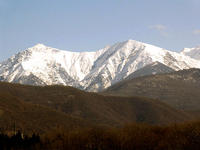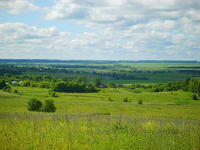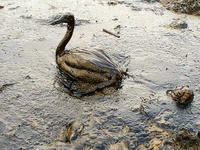You are in: Europe -> Russia -> Western Caucasus, and traditional search or Image Gallery will yield results of this site only
Western Caucasus
| Site number: | 900 |
|
| Type of site: | Natural | |
| Date: | - | |
| Date of Inscription: | 1999 | |
| Location: | Eurasia, Russian Federation, Krasnodar Region | |
Up to 75 images are shown here. Click on each for more details or on Image Gallery for more images.
| Description: | The Western Caucasus, stretching over 275,000 ha of the farthest western end of the Caucasus mountains, some 50 km north-east of the Black Sea, is among the minority of European large mountain areas that has not suffered human impact. Only wild animals have grazed its subalpine and alpine pastures; its far-reaching, undisturbed mountain forest expanses, extending from the lowlands to the subalpine zone, are the only ones of their kind in Europe. The site holds vast ecosystem diversity, teeming with significant endemic plants and wildlife; it is the birthplace and reintroduction site of the mountain subspecies of the European bison. --WHMNet paraphrase from the description at WHC Site, where additional information is available. | |
| The Western Caucasus is a western region of Caucasus from the Black Sea to Mount Elbrus. It includes natural UNESCO World Heritage Site situated 50 km to the north from the Russian resort of Sochi, comprising the extreme western edge of the Caucasus Mountains. As stated by the UNESCO specialists, it is the only large mountain area in Europe that has not experienced significant human impact. Its habitats are exceptionally varied for such a small area, ranging from lowlands to glaciers. The area contains the Caucasian State Nature Biosphere Reserve (Russian: Кавказский государственный природный биосферный заповедник), nature reserve (IUCN management category Ia) set up by the Soviet government in Krasnodar Krai, Adygea and Karachay-Cherkessia in 1924 to preserve some 85 m-high specimens of the Nordmann Fir (Abies nordmanniana), thought to be the tallest trees in Europe, and a unique forest formed by English Yew (Taxus baccata) and European Box (Buxus sempervirens) within the city of Sochi. About a third of its high mountain species of plants are recognized as endemic. The area also includes the Sochi National Park (IUCN management category II). The Western Caucasus is also the place of origin and of reintroduction of the Wisent (European Bison). The last wild wisent in the world was killed by poachers here in 1927. The wisents were reintroduced several decades later. --Wikipedia. Text is available under the Creative Commons Attribution-ShareAlike License. | ||
| Source: | http://whc.unesco.org/en/list/900 | |
| Reference: | 1. UNESCO World Heritage Center, Site Page. | |









